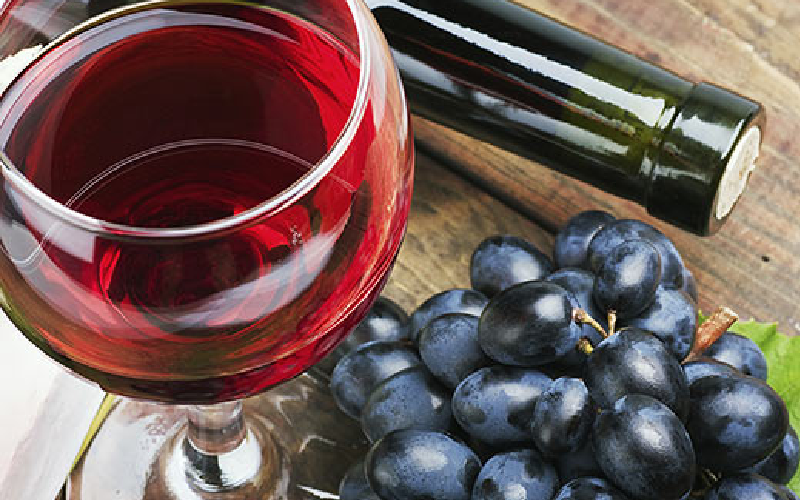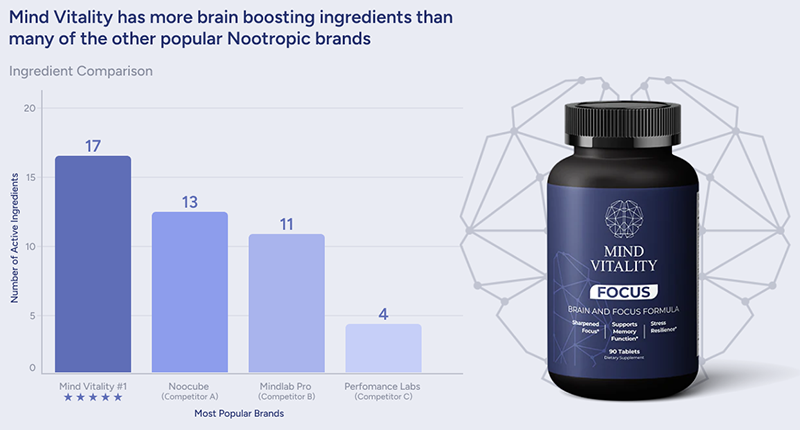Resveratrol and pterostilbene are powerful antioxidants that are both found in grapes and berries. They’re free radical fighting substances that are known to be anti-aging nutrients in general, and brain-enhancing nootropics in particular. Resveratrol and pterostilbene taken together have a synergistic effect that makes the pairing extremely popular in the fight against aging.
Contents
What Is Resveratrol?
Resveratrol, or RES, is a naturally occurring polyphenol antioxidant that tends to be concentrated mostly in the skins and seeds of grapes and berries — especially in the skins of red grapes. Polyphenols are chemicals found in most plants — including grapes, and are superior antioxidants.
Antioxidants are substances that fight oxidation in the human body. Oxidation is cell damage brought on by free radicals. Free radicals are essentially “out of control” molecules. Free radicals have atoms that are short one electron, making them unstable. Free radicals attempt to become more stable by grabbing electrons from other molecules they encounter and in doing so, make the “stolen from” molecules unstable. These rampaging free radicals can bring about a chain reaction of damaged molecules, which also means damaged cells. Damaged cells lead to weakened tissues and organs. In short, aging.
Antioxidants put a stop to runaway free radicals by providing the them with needed electrons, while at the same time not becoming unstable themselves. Antioxidants are good for cell health and anti-aging, and resveratrol (pronounced res-ver-a-trol)is one of the best antioxidants we know of.
An organelle is a subunit within a cell that serves a specific function in the cell — similar to how an organ serves a specific function in the body. Mitochondria are a type of organelle — their specific role is energy-related. Mitochondria use oxygen in a cell to break down nutrients to create energy to run the processes of the cell (an act known as cellular respiration). Because of this, and to emphasize the their importance, mitochondria are often referred to as the power plants of the cell. Some of the main compounds that keep mitochondria healthy are polyphenol antioxidants. Resveratrol is a powerful polyphenol antioxidant, and another reason for resveratrol being a vital tool in the field of anti-aging.
A big part of anti-aging involves preserving and improving brain function. Much of what we think of when we talk of aging — memory loss, lessening of mental acuity, or sharpness, and even Alzheimer’s disease — is the result of brain deterioration. Moderate levels of red wine consumption have been shown to clear away toxins and lower inflammation in the brain and reduce memory loss. It has also been shown to block plaque formation in the brain — plaque formation is linked to Alzheimer’s disease. The component in red wine responsible for all this brain health is resveratrol. Resveratrol accomplishes this by being able to cross the blood-brain barrier to stimulate the growth and development of neurons and blood vessels.

What Is Pterostilbene (PTE)?
If you skipped the above What Is Resveratrol? section, you’ll want to go back and read it now — much of the information about resveratrol applies to pterostilbene. Like resveratrol, pterostilbene, or PTE, is a polyphenol antioxidant and is also present in red grapes — though the food it’s found in highest concentrations is blueberries.
It makes sense that much of what is true of resveratrol is also true of pterostilbene because pterostilbene is an analog of resveratrol. An analog, also referred to as a structural analog or chemical analog, is a compound that has a structure very similar to that of another compound.
In plants, both resveratrol and pterostilbene have antibacterial and antiviral properties. In humans, both are antioxidants and have neuroprotective properties (they protect the nervous system from damage and injury).
The minor structural differences between resveratrol and pterostilbene show in the bioavailability of these two antioxidants. Bioavailability is the proportion of a compound that goes into circulation when introduced into the body — a substance with poor bioavailability means that when ingested, much of the compound doesn’t make it to the bloodstream during digestion. Here pterostilbene wins — it has considerably greater bioavailability than resveratrol due to it being more easily absorbed through the stomach lining.
Pterostilbene (pronounced terro-STILL-bene) has shown to have several anti-aging benefits, especially in the area of cognition, or brain health.
Pterostilbene Increases Neuroplasticity
Neuroplasticity can be thought of as the muscle building abilities of the brain. Things a person does often makes that person stronger at those things, and things a person doesn’t do makes that person weaker at those things. In short, the brain is continuously being altered by experiences. This is neuroplasticity — changes in brain organization and structure as one experiences events and learns new things.
The hippocampus is one of the brain structures associated with learning and memory. It is one of just two structures in the adult brain capable of neurogenesis — the formation of new neurons. Pterostilbene has been shown to increase hippocampus neurogenesis. Increasing neuroplasticity in the hippocampus improves learning and memory functions.
Pterostilbene Is a Neuroprotectant
As a powerful antioxidant, pterostilbene has been demonstrated to reduce free radicals and increase glutathione and superoxide dismutase. Glutathione, or GSH, is a molecule produced by the liver, and is made up of three amino acids: cysteine, glycine, and glutamate. Glutathione is a powerful antioxidant that stimulates the immune system and is important to improved learning and memory, and overall brain health. Superoxide dismutase, or SOD, is an enzyme — a substance that speeds up certain chemical reactions in the body — that contributes to the breaking down of harmful oxygen molecules in cells.
Pterostilbene Elevates Brain-Derived Neurotrophic Factor (BDNF)
Clinical trials have shown that pterostilbene elevates brain-derived neurotrophic factor in the hippocampus. Brain-derived neurotrophic factor, or BDNF, is a protein that acts on neurons in the central nervous system to help support survival of existing neurons and promote growth of new neurons. BDNF acts in areas vital to memory, learning, and higher thinking.
Pterostilbene and resveratrol are so similar that many people refer to pterostilbene as the new resveratrol. Why, then, would a person choose one over the other? Some people feel pterostilbene is a slightly better resveratrol, while others feel that the more well-known resveratrol has much more research behind it. Many people don’t bother trying to determine which is better — they solve the dilemma by taking a supplement that contains both.
Resveratrol and Pterostilbene Stack
Nootropics, also called cognitive enhancers, are a class of substances that improve cognitive function. Nootropics can provide effects on the brain in several different ways, including by positively influencing cerebral blood flow, growth factors, neurotransmitters, and cellular energy. Both resveratrol and pterostilbene are considered nootropics.
Studies have shown that many nootropics complement one another. Two nootropics, taken together, often build off the effects of one another — there’s a synergy where, as the saying goes, the whole is greater than the sum of its parts. This positive effect of combining nootropics is so well-known and common that its been given a name — stacking. In the field of nutrition, stacking is the term that simply means combining two or more nootropics to achieve some specific, desired effect.
Resveratrol and pterostilbene are quite similar in the effects they have, which as it turns out is often a very good indication of synergy — and a good indication that these two compounds are good candidates to stack. This has been demonstrated in a number of studies, including research that determined the combination of resveratrol and pterostilbene provided more powerful antioxidant actions than either one alone.
Resveratrol and Pterostilbene and Gene Expression
A gene is a small bit of genetic material written in a code and called DNA. Genes have a built-in set of instructions for generating molecules the body needs to survive. Interestingly, a gene itself isn’t used by the body. Instead, it’s the products (usually proteins) a gene synthesizes that’s of use. Gene expression is the process where the information contained within a gene is turned into a useful product.
Genes are often thought of as static — bits of fixed hereditary information that specify a physical trait such as eye color. In fact, gene expression allows a cell to respond to a changing environment, acting as an on-off switch controlling when a gene makes a protein, and how much of that protein should be made. One example of gene expression and a changing environment is caloric restriction.
It’s long been realized that calorie restriction — reducing one’s daily caloric intake below what is typical or habitual (without deprivation of essential nutrients) — can delay the onset of some age-related disorders and may extend a person’s lifespan. As studies have shown, this is because caloric restriction turns on genes related to long term survival. The best news is that the same genes that influence lifespan can be activated not only by caloric reductions, but also by some nutritional supplements — including resveratrol and pterostilbene.
The “turning on” of genes isn’t a simple one-step act — it’s more of a multi-step process. You can think of it as a process that starts upstream and has further actions downstream. Resveratrol activates genes near the beginning of this process. These genes in turn activate a whole host of disease-preventing genes. Using this analogy resveratrol’s genetic action is taking place upstream.
Pterostilbene, on the other hand, activates genes downstream. Resveratrol kicks things off, activating some genes, and pterostilbene follows up helping in the activation of other genes needed to get the whole process of firing up the disease-preventing genes completed. Acting together in a complementary fashion — synergistically — resveratrol and pterostilbene provide powerful anti-aging effects in the process of gene expression.
Pterostilbene supplies its positive effects on gene expression in ways that strengthen and augment those supplied by resveratrol. That is one of the main reasons you’ll find pterostilbene paired with resveratrol in many nootropic supplements.
Conclusion
Resveratrol and pterostilbene are polyphenol antioxidants that are present in high quantities in red grapes (resveratrol) and blueberries (pterostilbene).
Resveratrol has been well researched over the past many years, and is a “big name” in the field of anti-aging and nootropic supplements. Pterostilbene is also highly regarded by nutritionists, but has only started to gain in popularity over the last few years and as such is less researched.
Resveratrol and pterostilbene are both free radical fighters that have reputations as excellent cognitive enhancers. Either one taken individually is a good choice for those interested in brain health, but taken together the synergistic effect of the pairing is even more powerful.





